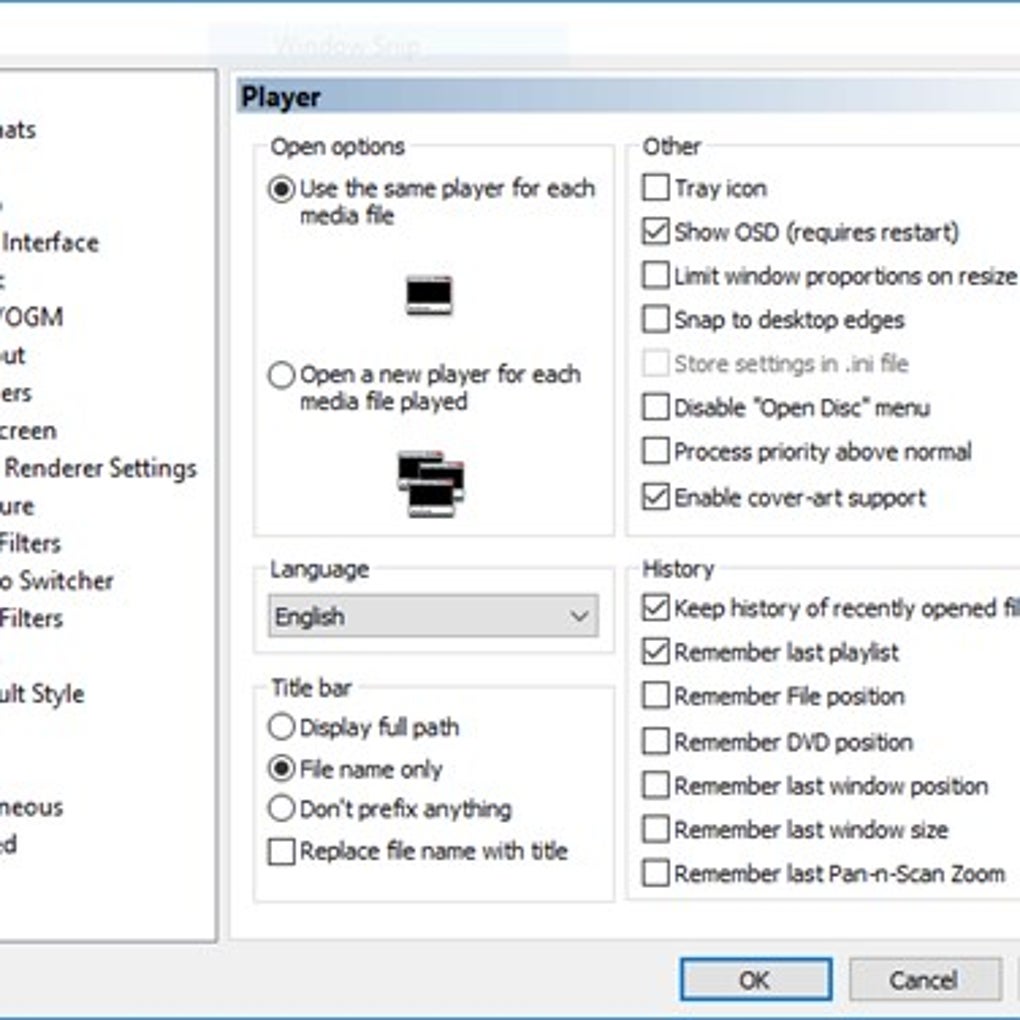

- Media player clasic command line movie#
- Media player clasic command line install#
- Media player clasic command line tv#
- Media player clasic command line free#
Once you are done saving frames the option needs to be turned off again or it will do the same with every video you play. For some reason more recent versions of VLC do not recognize the scene filter is enabled until you close and re-open the program. Note: If after following these steps images are not being created, close VLC after step 4 and re-open it, then play the video. They will continue to save until you press stop, even if you pause or skip through the video. Play the video file and the images will automatically start saving. Click on Filters in the Advanced Preferences tree (don’t expand it) and tick the Scene video filter box near the top right, press Save.ĥ.

Using multiples of that value will give you a recording ratio in seconds.Ĥ. Tip: If you’re not 100% sure of the video’s frame rate, play it in VLC, press Ctrl+J and look for the frame rate number. The ratio will save an image every xx number of frames, so if your video is 30 frames per second, a value of 150 will save an image every 5 seconds. Set the image format (png/bmp/jpg etc), the path to save the files (leave blank to save to your Pictures folder) and the recording ratio. Expand Video > Filters in the tree and click on Scene Filter. Open VLC, go to Preferences (Ctrl+P) and click on Show All Settings at the bottom left.ģ.
Media player clasic command line install#
If you haven’t already, Download VLC media player and install or Download Portable VLC media player and extract to a folder of your choice.Ģ. First we’ll deal with the user interface method.ġ. This can be achieved through the main user interface while more advanced users can use Command Prompt. VLC is a popular open source media player that can save sequences of images from any video you choose to play. That could change to anything else at any time though so you just need to pay attention during setup. At the moment it’s just a DVDVideoSoft product hub which you can delete the shortcut for on your desktop and a stats option on install which is opt in.
Media player clasic command line free#
Note: Like all DvdVideoSoft products, Free Video to JPG Converter always comes bundled with something you don’t really want. NET Framework 2/3.5 then it will be offered on install. It’s still a useful tool though and worth checking out because Free Video to JPG Converter is still faster than extracting images in real time. For instance, the total frames from a video setting of 10 doesn’t produce an expected equal split of 10 frames across the whole video. There are a few issues with one or two of the preset values or if you enter a custom value in the frame boxes. Extraction times are reasonable and will differ depending on video length and how many frames are being extracted. Set your extract criteria and optionally a different save location to the default, then start the process. There are four extraction methods to choose from, extract an image every number of frames, extract an image every number of seconds, take a total number of frames from the video or extract every single frame.Īdd any number of video files by using the Add files button or drag and drop, most video formats are supported like MP4, MKV, AVI, VOB, WMV, MOV, FLV and etc. The program itself will save frames from a video file to a sequence of JPG images. For that purpose, you need a program that can extract however many video frames you want and save them to image files automatically, like jpg or png. If you want to extract a succession or range of frames or even all frames from a short video clip, capturing the images one at a time is incredibly inefficient and time consuming.

If you want to capture an image of one or two frames it’s quite easy and you simply pause the video and press the Print Screen key.
Media player clasic command line movie#
A video file on a computer simply stores all the frames together and plays them in order, and the total frames stored for a typical movie reaches into the hundreds of thousands.
Media player clasic command line tv#
Most movies and TV programs are filmed at around 24-30 images per second, each individual image is called a frame which is where you see the term frames per second (FPS). The quicker the images are played, the smoother and more fluid the movement looks. These images are then played one after the other several times a second which fools your eye into thinking the object is moving. Every video or animation you see on your television, computer, phone, tablet or even at the movie theater is made up from a succession of still images.


 0 kommentar(er)
0 kommentar(er)
